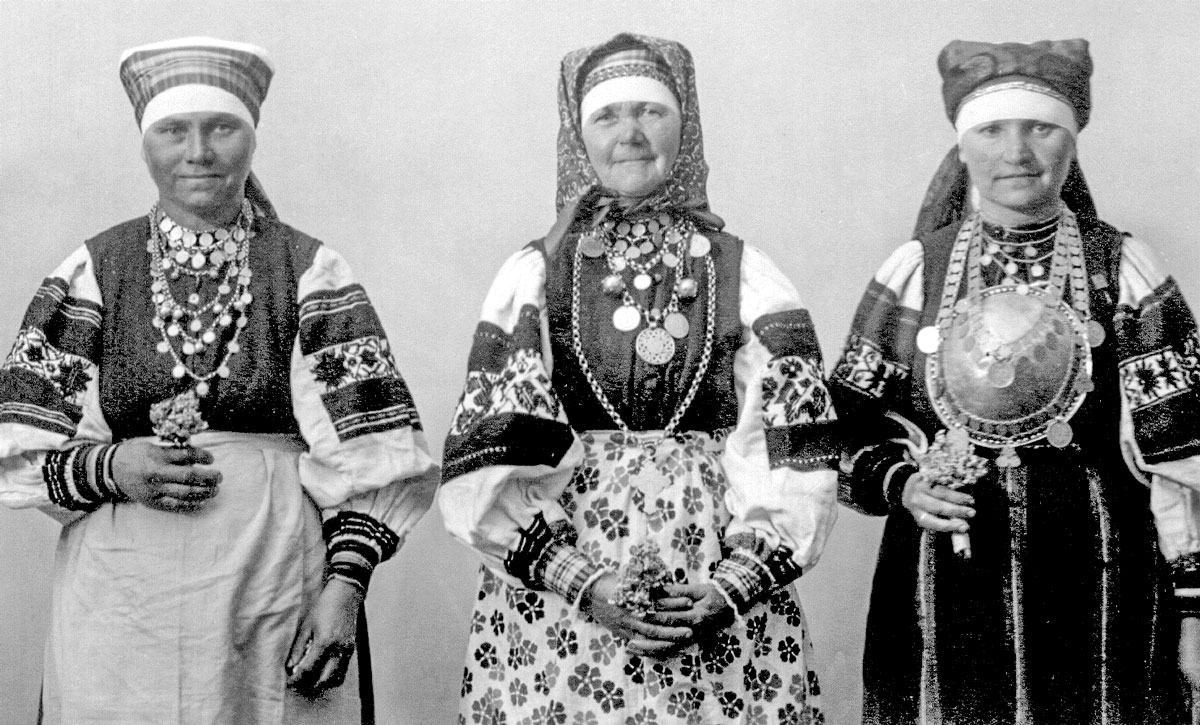Recordings from the Estonian Folklore Archives 3
Anne Vabarna

Anne Vabarna with her co-singers at a recording session in Tallinn in 1936. Photo by P. Parikas. ERA, Foto 829.
In the Setu region the old style of singing was able to adapt to changing times and survived as a living tradition right to the beginning of the 21 century. The name of Anne Vabarna (1877–1964) had become one of the symbols of the Setu song culture. Anne was born in the village of Võporsova on the shores of Lake Peipus. At the age of 19 she got married and moved to the village of Tona near Värska, where she had altogether nine children. She became famous as a singer in the 1920’s and from the 1930’s she performed outside the Setu region; all across Estonia on the excursions of folk musicians that August Pulst organized, in Finland and after the Second World War in Moscow as well as numerous times in Tallinn. Anne herself was uneducated but her endless trove of songs, fairy tales, and other folklore were written down by her children as well as many professional collectors of folklore. Altogether almost 6000 pages of texts have been recorded from her. Anne also created many narrative verses including the epic poem about the Setu King, Peko. She was also adept at improvising on all manner of themes. Anne’s songs have been repeatedly recorded. The ones in this collection were recorded in 1936 at the National Radio and during the 1959 collecting expedition of the Literary Museum and Estonian Radio. Here singing with her are her daughters Matrjona (Mato) Suuvere and Natalia (Nati) Vabarna and her daughter-in-law Varvara (Varu) Vabarna.
Songs:
- 7. The Herd Is Far Away
- 10. Bidding Hands to Work
- 31. Grew into a Herder!
- 37. Ann Went to the Granary
- 39. The Horsefly’s Funeral
- 50. The Groom is Brought to the Table
- 51. Adorn Yourself, Brother!
- 52. The Bride’s Lament to Her Brother
- 53. A Daughter Laments Her Mother
- 54. Maidens Lament Their Friend
- 75. The Fishing Lake
- 88. Sash Weaving
- 89. The Grinding Stone
